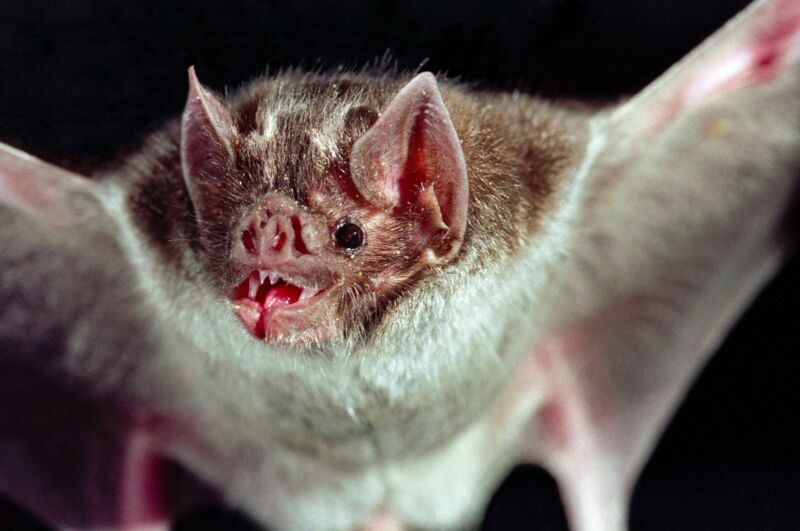Vampire bats bond by grooming first to build trust before sharing blood

Enlarge / A vampire bat in flight with spread wings. The creatures build strong social bonds through grooming, sharing blood. (credit: Samuel Betkowski/Getty Images)
Vampire bats can starve to death if they don't feed for a mere three days, so strong social ties can be key to survival. For instance, a bat will sometimes share food with a hungry member of the same roost, regurgitating any blood it has consumed into the mouth of the hungry bat-a bit like a bloody French kiss. That's a true "friend." Evolutionary biologists have dubbed this behavior "reciprocal altruism." But vampire bats can also form bonds with strange bats from outside the roost, building up trust with mutual grooming first before moving on to food sharing, according to a new paper in Current Biology.
What's being tested here is a game theory model first proposed in 1998 colloquially known as "raise the stakes." It's similar to the famous prisoner's dilemma, in which two criminal suspects are arrested and separately offered a deal. If one of them confesses and the other doesn't, the defector will go free and the other suspect will get 20 years in jail. If both suspects confess, they will each get ten years in jail. The correct strategy, therefore, is to always confess, since one should assume the other party will act solely in his or her self-interest. Both players will reap the most benefit by cooperating with each other.
But cooperative behavior isn't always quite so simple as a binary choice between cooperating or defecting; it's more like a continuously variably investment. The "raise the stakes" model of relationships holds that two strangers can make low-risk, incremental investments to see if there is potential for further cooperation. If the other party reciprocates in kind, it builds trust and a relationship can form. If not, no relationship will develop, and nobody has spent too much time and energy on a worthless (from a survival standpoint) connection.
Read 15 remaining paragraphs | Comments